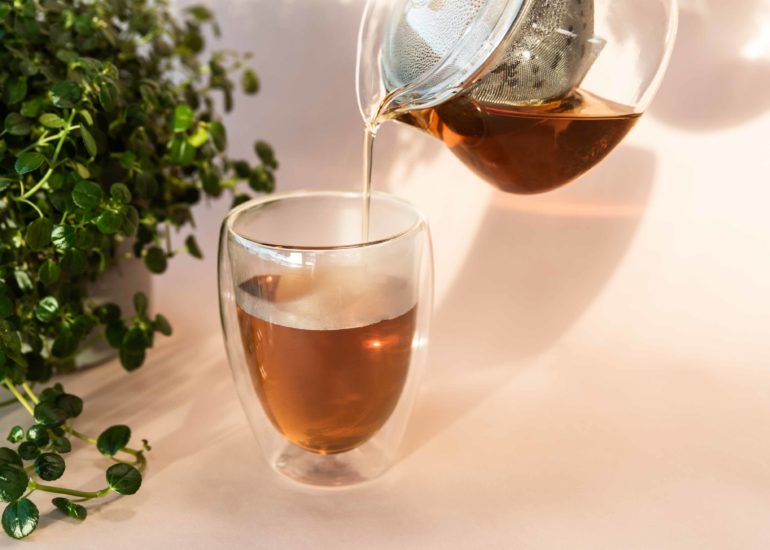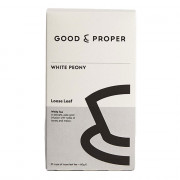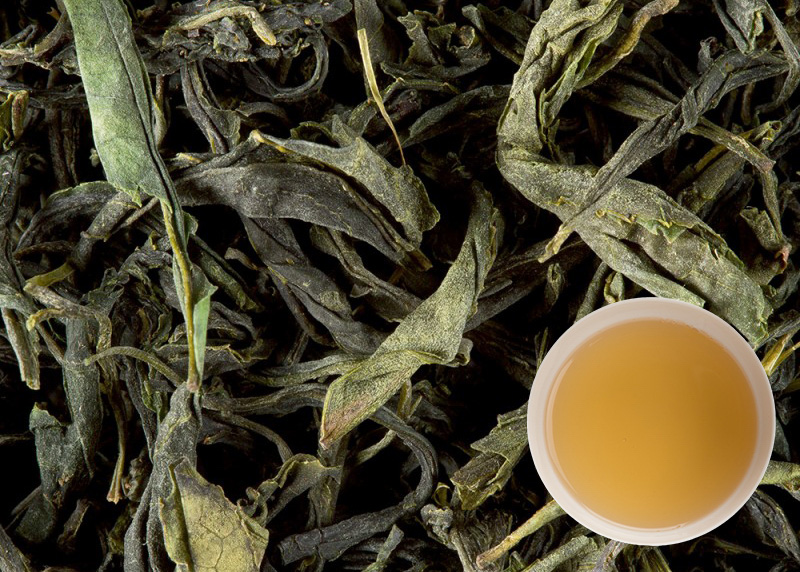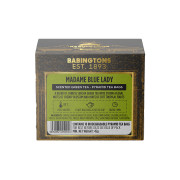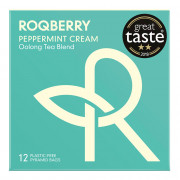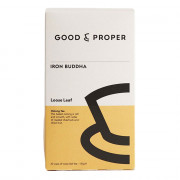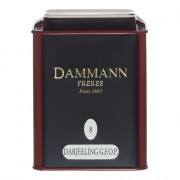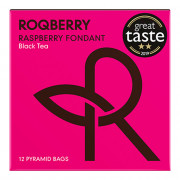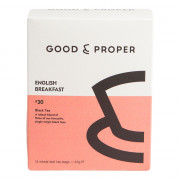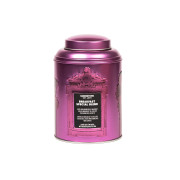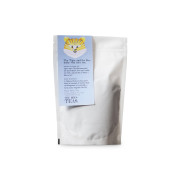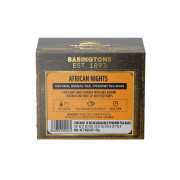Meanwhile, let us have a sip of tea. The afternoon glow is brightening the bamboos, the fountains are bubbling with delight, the soughing of the pines is heard in our kettle...
Okakura Kakuzo, The Book of Tea
Coffee Friend’s first and greatest love is definitely Her Majesty Coffee. And yet… where there’s delicious coffee, there’s always some tasty tea too. It’s no coincidence that gracious hosts welcome their guests in with the suggestion of “coffee or tea”. Though it may seem at first glance like these two drinks are worlds apart, they actually have quite a lot in common.
Both of them are the subjects of numerous legends and myths, both have had philosophical treatises and grand operas dedicated to them, both have inspired great artists to create their masterpieces, both have resulted in civil unrest and even wars… Both beverages spread across Europe around the same time, in the first half of the 17th century. Coffee and tea were both used exclusively for medicinal purposes at first and could only be purchased in pharmacies — it was later on that they reached the luxurious dinner tables of European nobility and ultimately became inseparable from the everyday lives of us all.
Both coffee and tea contain caffeine, yet the way it affects us is a bit different. The impact of coffee is powerful and immediate: you experience a rush of energy in as little as 10 minutes, then it starts tapering off after the next few hours. The caffeine in tea, on the other hand, is slower to affect the human body, yet its impact lasts longer.
Please forgive us, oh Gods of Coffee, but this time we’re going to dedicate our new blog post to fans of tea: we’re going to explore different varieties, the recommended brewing methods, the latest tea trends and ways to make your drinks even more delicious. Well, will you join us for a cup of tea?
Over 1500 Tea Varieties, All From a Single Tea Tree
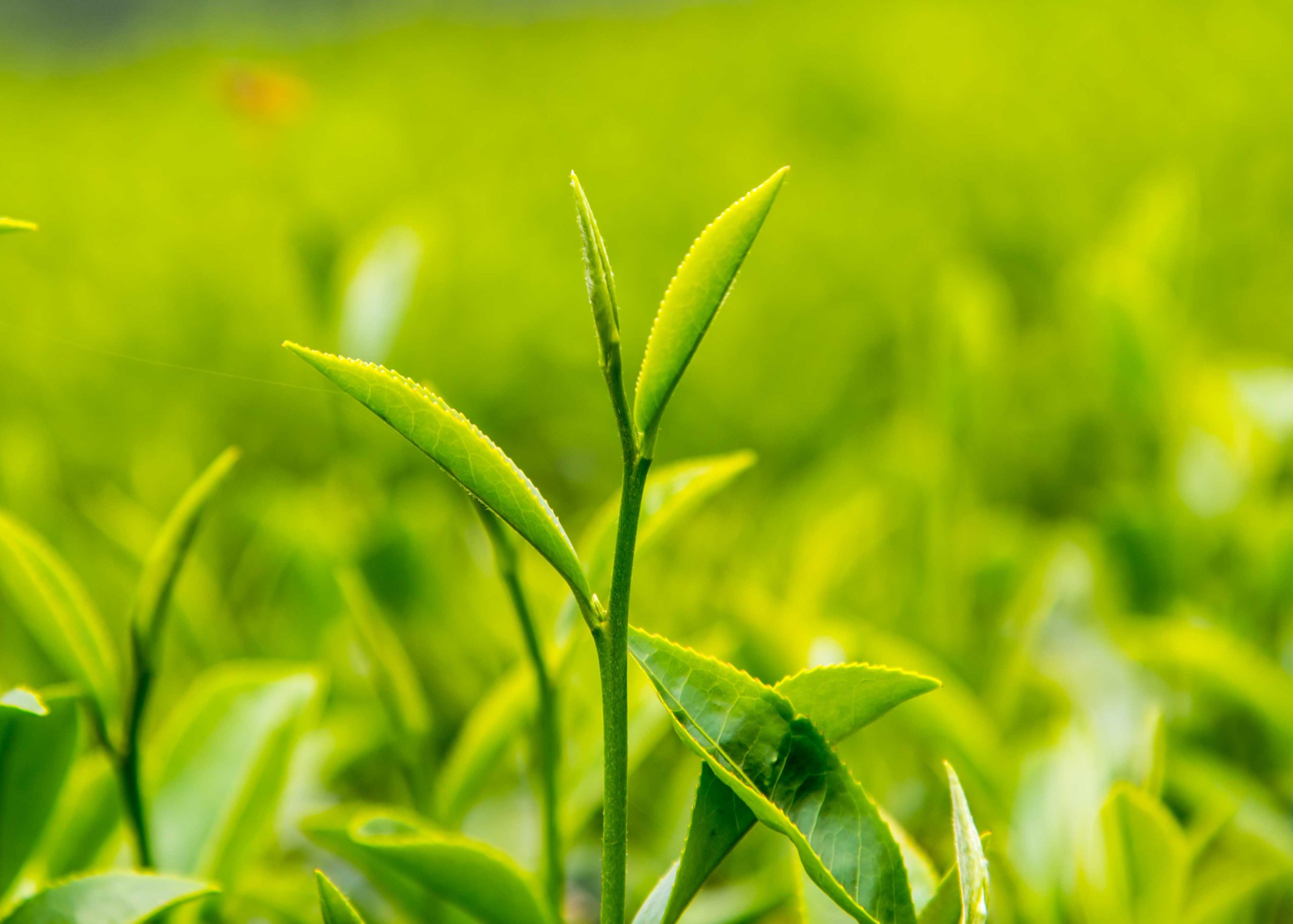
You probably know already that there are hundreds of tea varieties out there. If we include all of the subspecies of the main tea varieties in the total number, we end up with more than 1500 various types of tea. The surprising thing is this though: all of these are derived from the very same evergreen tree. Its Latin name is Camellia sinensis.
Different types of tea are the result of different methods used to process the leaves of a tea tree. Depending on the way they’re processed (that is, what kind of buds and/or leaves are plucked, when they are plucked and what happens once they’ve been plucked), a certain tea variety is created. The best-known and most popular of them are the following five: white tea, green tea, oolong tea, black tea and pu-erh tea.
Your Guide to the Palette of Tea Flavours
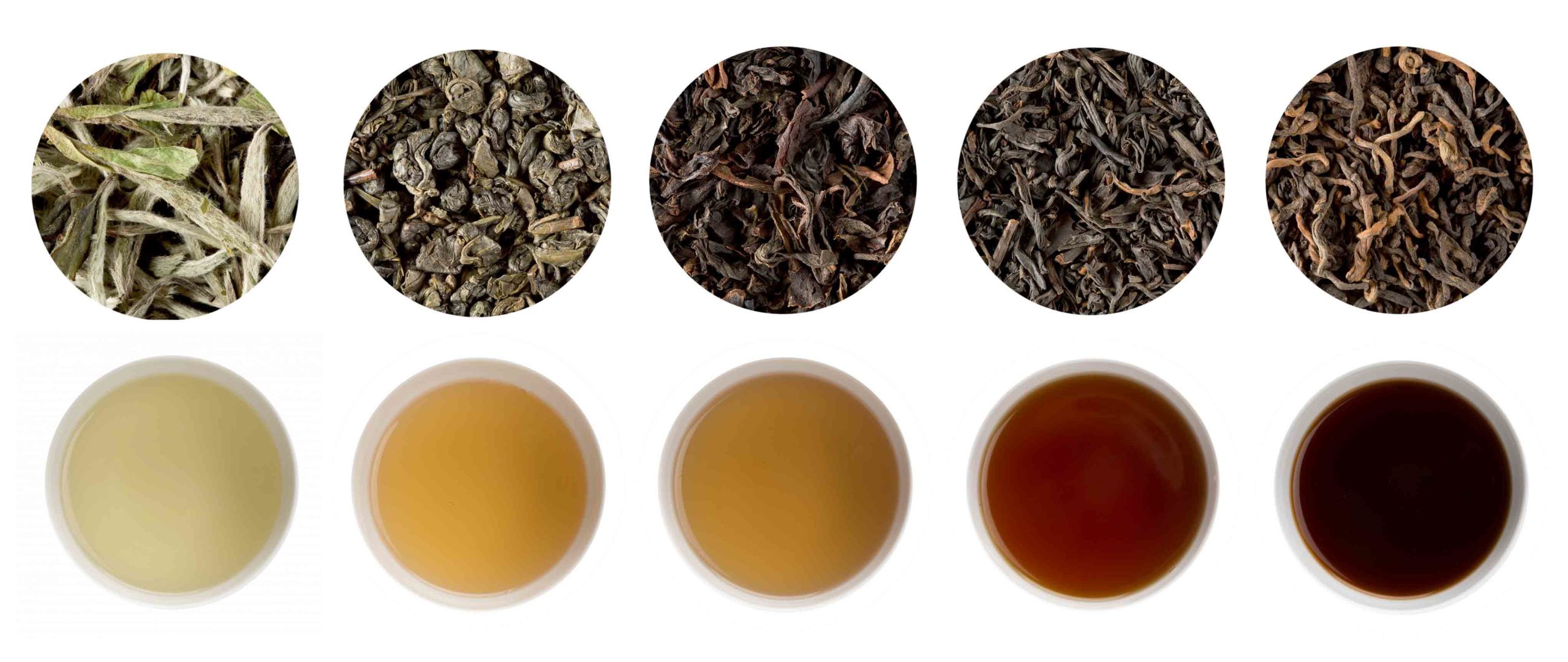
Inspired by their unique colours and flavours, we’ve ascribed a certain season to every one of the key tea varieties. This will allow us to travel all the way from early spring symbolised by white tea to chilly winter that pu-erh tea reminds us of. We’ll learn about the unique qualities of these teas, their processing techniques, effects, aromas, flavours and recommended brewing methods. Do you have a mug of tea ready nearby? Because you’re certainly going to start craving a sip!
White Tea: Subtlety of Early Spring
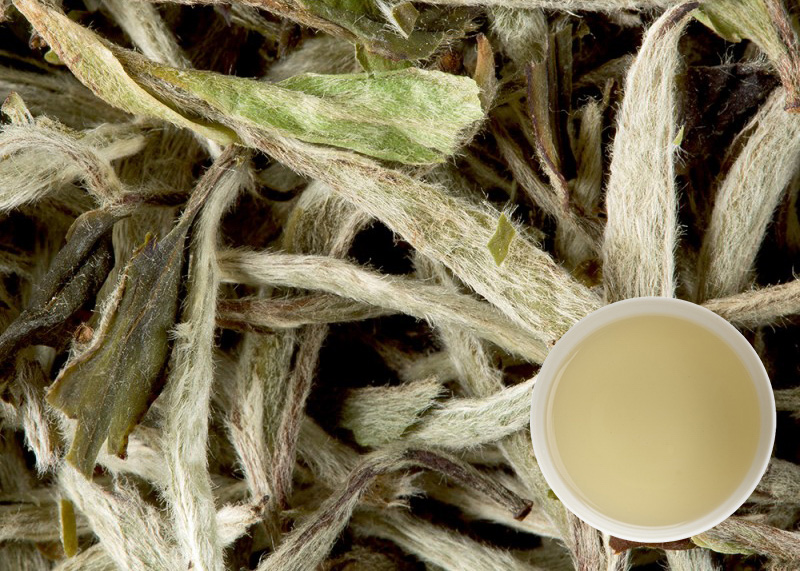
Elegant, refined, subtle, fresh and light, white tea is only slightly influenced by the human hand. It’s the tea of early spring, produced either exclusively from the first tea buds (leaves that haven’t sprouted yet) or buds mixed with early, emerald-green leaves. More and more Europeans are discovering white tea with each passing year, but it’s still a relatively rare guest in our tea cups. Used to the vivid flavours of black tea, we struggle to appreciate the gentle subtlety of white tea sometimes. However, if you learn to do that, every sip is sure to entice and enchant. The finest white teas originate from the Chinese province of Fujian.
Processing
This tea isn’t aggressively processed: instead, it’s done with extreme care and attention. Because tea buds must be picked before they’ve turned into leaves, there’s little time for plucking (which is why this tea tends to be pricier than others). As soon as the buds are removed, they’re spread outside on bamboo mats and allowed to wither under the light of the sun — so starts a natural, slow process of oxidation, which lasts for around 52–60 hours. Once the leaves have lost about 70–80% of their original moisture, they’re poured into large pans and fired until dried out completely. This stops the natural oxidation process. Afterwards, the leaves are carefully sorted.
Effect
White tea is produced using the youngest of buds, still brimming with the energy of spring. After the chilly winter months, tea trees must provide these buds with enough nutrients to help them grow. Because of this (and the minimal processing it undergoes), white tea boasts the largest amount of antioxidants, which are excellent at boosting our immune system. It has a cooling, refreshing effect as well. This tea is characterised by a lower caffeine content, so you can safely enjoy a cup late in the evening if you feel like it. It’s sure to transport you straight to the days of early spring…
Aroma and flavour palette
White tea is naturally sweet and refreshing. There are numerous subtle aromas and flavours to be detected: sweet notes of honey, zingy citrus fruit, flowery scents reminiscent of jasmine and roses… The body of this tea is light and its colour is a faint yellow — don’t steep it longer to obtain a brighter shade. Its delicate hue is precisely why this tea is called “white”.
Brewing guide

White tea is extremely subtle, so it’s important to avoid high temperatures and steep it for a shorter period of time: two teaspoons (around 4 g) of tea is usually recommended for a single cup, while the right water temperature is around 80 °C. Steep it for 2–3 minutes. The finest white teas can be re-steeped as many as 2–3 times.
Green Tea: Vivacity of May
Green tea has found its way into our hearts hundreds of years ago. What makes it special is its health benefits and its pure, refreshing taste. It’s said that drinking fine green tea is like taking a walk along a vast, green meadow or a deserted, silent seashore. Compared to white tea, green tea is marked by a stronger flavour, more vivid tasting notes and a brighter colour. Green tea of the highest quality originates from either China or Japan: Chinese varieties are more delicate and subtle, while Japanese ones are more intense.
Processing
To produce the finest green teas, the first buds are plucked along with the young leaves. A few hours later, they’re either pan-fried (the Chinese method) or steamed (the Japanese method) to prevent oxidation. That’s why the leaves of green tea retain their enchanting emerald colour — it’s as if it becomes “fixed”. To unveil the aromas hidden in the leaves, they’re rolled by hand or with the help of special machinery after frying (a manual or mechanical technique is chosen based on the subspecies and class of tea). That’s when the leaves are shaped into balls or strips (depending on the customs of the country or region). Finally, the leaves are left to dry until the right moisture content is obtained.
Effect
Just like white tea, green tea is brimming with antioxidants capable of boosting our immune system. Green tea has been proven to enhance memory, improve productivity and curb anxiety. It can also help control hunger. Sipping it is like running around a meadow or strolling along the seashore on a warm, refreshing spring’s day.
Aroma and flavour palette
Green tea has numerous subspecies, so when it comes to aromas and flavours, its palette is particularly varied. Chinese green tea is lighter and more delicate. It’s marked by a hint of sweetness, just like white tea is. You’re likely to detect the aroma of freshly cut grass in this tea, along with the flavours of fruit, flowers and nuts. The taste of Japanese green tea is more intense: it’s marked by strong hints of greenery and seaweed. Its aroma may remind you of the smell of the sea too. Once steeped, the prepared drink acquires a faint green colour, with a shade of yellow.
Brewing guide

When brewing green tea, the trick is to avoid high temperatures at all costs — they often result in extra bitterness and, unfortunately, mark the most common mistake in the brewing of green tea. Use water of around 80 °C for Chinese green tea and reduce it to 60–70 °C if you’re brewing a Japanese variety. Use 1 teaspoon (around 2 g of tea leaves) for a single serving and steep for 2–3 minutes.
Oolong Tea: High Jinks of Summer
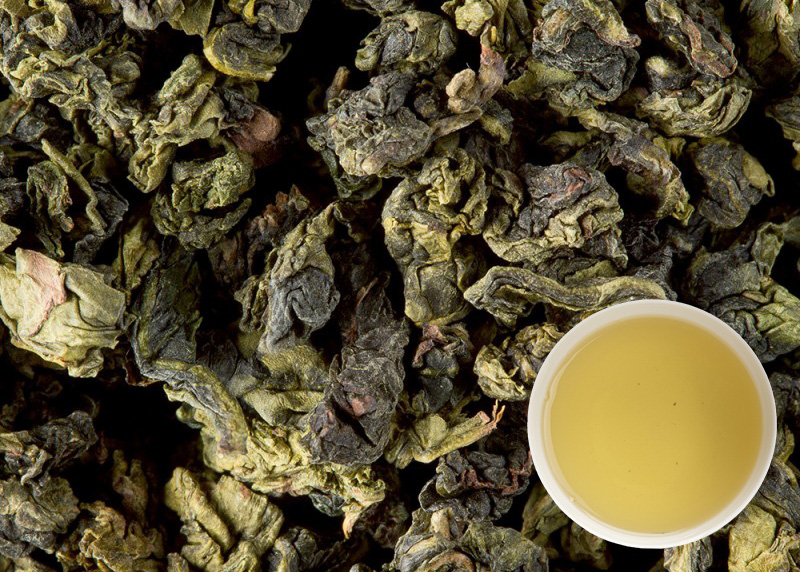
The name of oolong tea originates from the Chinese phrase wu long, which means “black dragon”. Some locals say it was inspired by the look of the leaves once they unfurl in the water: they’re reminiscent of black dragons engaged in a dance.
Depending on their oxidation level, oolong teas are grouped into two different categories: lightly oxidised oolongs (10–30%) are reminiscent of green tea, while heavily oxidised oolongs (50–70%) are more likely to remind you of black tea. The first ones are delicate, creamy, fruity and flowery, while the second ones tend to be heavier, thicker and more vivid.
The homeland of the finest oolong teas is Taiwan and the Chinese region of Fujian. Nowadays, however, other regions — such as Thailand — produce excellent oolongs too.
Processing
Oolong tea is produced from relatively large leaves. They’re plucked and then left for a few hours to wither naturally. Afterwards, these leaves are usually moved to special premises where air temperature of 22–25 °C is maintained, along with a high moisture content of around 85%. There, they’re tossed gently to encourage the release of water and aroma. Once the desired oxidation degree is obtained, the leaves are pan-fried to stop oxidation (just like in the case of green tea), then rolled and dried. This process requires a great deal of skill and a high level of mastery. Each tea artisan uses a unique recipe that’s usually kept secret and passed down from generation to generation.
Effect
Oolong is great at boosting the digestive system, so lots of people believe that it can be used as an effective weight loss tool. Its benefits on the skin are also well-known: some even go as far as to call it a youth elixir. A sip of oolong tea is bound to get you in a dreamy, poetic mood and encourage creativity.
Aroma and flavour palette
Oolong teas boast the widest palette of flavours and aromas. Lightly oxidised oolongs are similar to green tea: they’ll present you with a bouquet of flowery, fruity notes, along with a few hints of tropical fruit mixed in. Their consistency is deliciously creamy. The flavour of heavily oxidised oolongs, as much as it may remind you of black tea, is actually more complex and multi-layered: you can encounter exquisite notes of cocoa, cherries and even chocolate.
Brewing guide

We recommend using 2 g of oolong leaves for a single serving. The more heavily oxidised your tea is, the higher the brewing temperature you should choose. While green and white teas are suited well for lower temperatures, oolong requires a higher temperature of around 90 °C. Steep it for 4–6 minutes. Again, the higher the oxidation level, the longer the recommended steeping duration. The world’s finest oolongs can be re-steeped as many as 6–8 times and they’ll still keep on revealing new, undiscovered flavours in every cup you brew.
Black Tea: Autumnal Enthusiasm
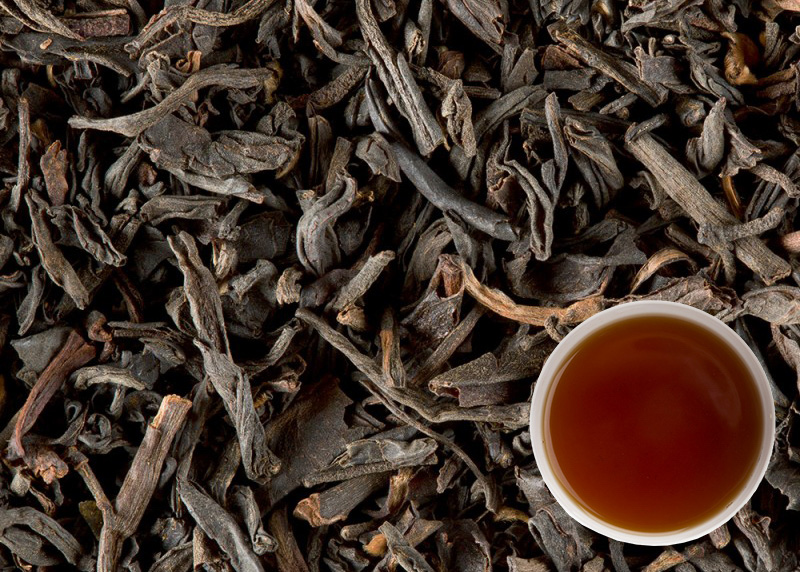
The Western world seems to absolutely adore black tea. It’s no surprise then that it makes up the majority of all teas produced globally. Interestingly, in China, black tea was discovered years after its green counterpart. It happened at the end of the 16th century, when the Chinese began to export their teas. The story goes that the very first tea shipments to leave what is now known as the city of Guangzhou contained green tea. Over the next 6 months, as the cargo was travelling to Great Britain by sea, the leaves oxidised and, once it reached its destination, the tea was as black as coal. The Europeans quickly took a liking to this beverage when they started adding milk and sugar to it. By the way, in China, black tea is known as “red tea” because of its reddish colour.
Just like white, green and oolong teas, black tea is obtained from a plant known as camellia sinensis. The main difference between these varieties lies in the way the leaves are processed after plucking. Black tea is fully oxidised, which is what gives it its rich, strong taste. It has hundreds of subspecies: that’s because black tea is grown in various countries and certain elements of its processing differ from region to region. You can discover your favourite: from subtle Darjeeling to malty Assam or smoky Lapsang Souchong.
Black tea also serves as an excellent base for various tea blends. It’s often mixed with fruit, spices, flower petals, or seasoned with essential oils.
Processing
Black tea is made from mature leaves. Once they’re plucked, the leaves are allowed to wither naturally. To encourage oxidation, these leaves are then rolled by hand or, more often than not, using a special drum. The enzymes within the leaves react with oxygen, which causes these leaves to change their colour and flavour. Finally, the tea is dried, sorted and packed. To give them a smoky aroma, some teas are pan-fried too.
Effect
Black tea has an energising effect, so it’s perfect for enjoying in the morning. It’s filled with flavonoids, which are powerful antioxidants and can reduce cholesterol, leading to a lower risk of heart disease. Black tea is guaranteed to wake you up and provide you with that much-needed boost of energy.
Aroma and flavour palette
Indian teas tend to dominate the Western world: they’re strong, quite bitter and particularly energising. Malty flavours and hints of caramel can be detected in these teas. Chinese black tea is more delicate, not as energising, marked by notes of dried fruit and a pleasantly sweet aroma. The prepared brew is bright red.
Brewing guide

Black tea isn’t as sensitive to water temperature as green or white tea is, so we suggest using water of 100 °C and steeping for 4–5 minutes. Most black teas go excellently with milk. Note: first-flush Darjeeling teas and other premium Chinese black teas should be brewed using water of 96 °C and steeped for around 3 minutes. These teas are so unique that there’s no need to add anything to them.
Pu-Erh Tea: Wintery Slumber
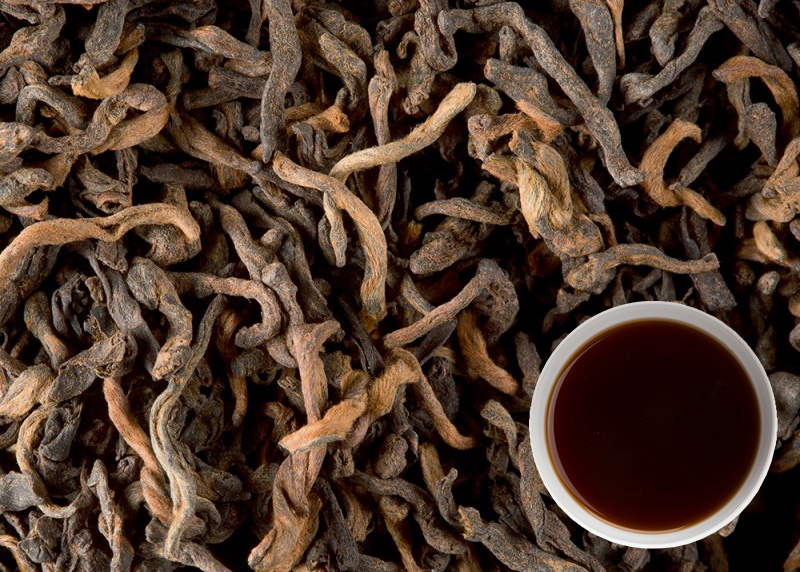
The name “pu-erh” comes from the town of Pu’er located in the Chinese province of Yunnan and known for centuries for producing delicious tea that’s been gaining ground in the West too lately. This heavily fermented — and often aged — variety is brimming with microorganisms that act as natural probiotics. It stimulates digestion and boosts our immune system. In addition to its health benefits, pu-erh tea is also characterised by a unique flavour and aroma. These often come as a complete surprise to those tasting this tea for the first time.
There are two varieties of pu-erh tea: green pu-erh and black pu-erh. The first is non-fermented, raw, reminiscent of green tea, while the second is fermented, similar in its taste and colour to traditional black tea. Both varieties originate from the Yunnan Province in southern China. For maximum precision, you should reserve the name “pu-erh” exclusively for teas produced in Yunnan — if produced elsewhere, such tea is referred to simply as “dark”.
What makes pu-erh so special is the fact that it is aged. You can age it yourself or purchase pu-erh that has been aged already. With time, this tea acquires a more complex, profound flavour, so aged pu-erh teas tend to be cherished by true tea connoisseurs.
Processing
When making green pu-erh, tea leaves are plucked, withered, allowed to oxidise lightly, then fired, rolled and eventually dried. The workers sort through the dried tea again and either press it or leave it as is. Green pu-erh tea is particularly energising and has a relatively rich taste. If it’s aged for several years, the flavour becomes sweeter, richer and more delicate. Aged for more than 15 years, this tea acquires a colour reminiscent of black pu-erh. The taste becomes similar to its black counterpart as well, although it tends to be even more complex.
Black pu-erh has its roots in the 1960s. It was discovered when looking for a faster way to produce “aged” pu-erh. This tea is very heavily fermented and can be either loose or pressed. Once the drying stage is over, black pu-erh is placed in a moist environment and left to ferment for 1.5–2 months. This process is very meticulous and the end result ultimately depends on how clean and orderly the fermentation stage is.
Effect
Pu-erh is known for its detoxifying and digestion-boosting abilities, so it’s a great choice straight after a heavy meal. It’s believed that this tea aids in weight loss, reduces cholesterol and improves circulation. Pu-erh can also disperse the effects of alcohol, so it’s sometimes used as a hangover cure. A few sips of this tea will provide you with a sense of stability and groundedness, while helping you combat fatigue at the same time.
Aroma and flavour palette
The aromas and flavours of pu-erh tea are absolutely unique. You may detect notes of wet soil, moss, mushrooms, wood, leather or minerals in the prepared brew. Its colour is dark brown, sometimes almost black, and its body is particularly heavy.
Brewing guide

It’s generally recommended to use 2 g of pu-erh tea per serving. Tip: first, pour freshly boiled water over the leaves and then immediately drain it. This will wash off any impurities and wake the leaves up. Once you do that, pour freshly boiled water over the leaves again and steep for 3–5 minutes. High-quality pu-erh can be re-steeped several times.
Tea Blends
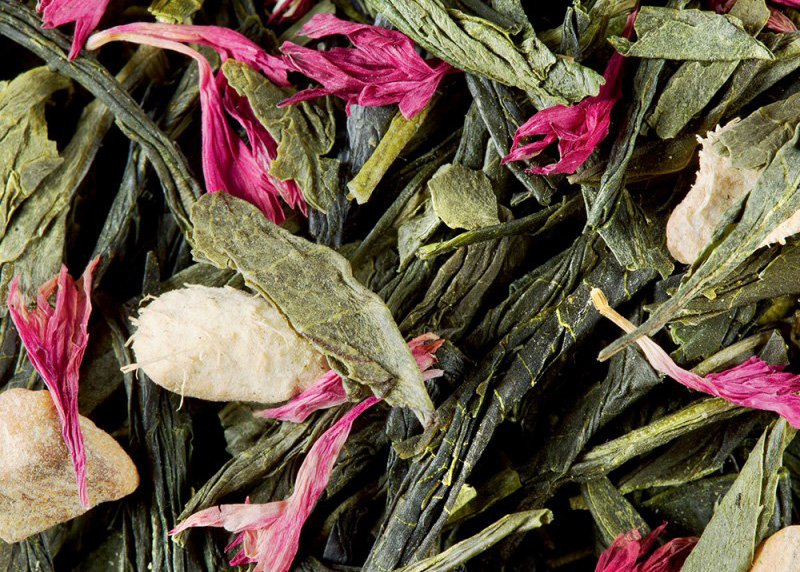
Nowadays, single-origin teas are still treasured by tea connoisseurs all over the globe — but that doesn’t preclude tea blends from retaining their popularity and even going through a rebirth of sorts. The artisans of various tea companies love experiments: they’re constantly on a search for a new, unique blend that might eventually turn into the company’s signature product. People at home aren’t far behind too: they’re also experimenting with various ingredients and trying to create extraordinary blends of their own.
The tradition of blend production goes down several centuries. Before different processing methods were perfected and allowed us to enjoy the natural taste of this exquisite drink, tea used to be quite bitter when consumed on its own. To counteract this, as many as 400 years ago, the Chinese would mix tea leaves with jasmine or other flowers in order to endow their tea with a more pleasant flavour and aroma.
Today, what’s referred to as a tea blend is a mixture of several types of tea. The word can also refer to tea with additional ingredients of some sort, such as fruit, flowers, spices or essential oils. These can be mixed with the leaves or used as natural flavourings.
Some tea blends have become so popular over the years that they’re now seen as true classics, their names turning into generic terms used to describe certain varieties. Let’s look at a few of the best-known blends out there:
English Breakfast
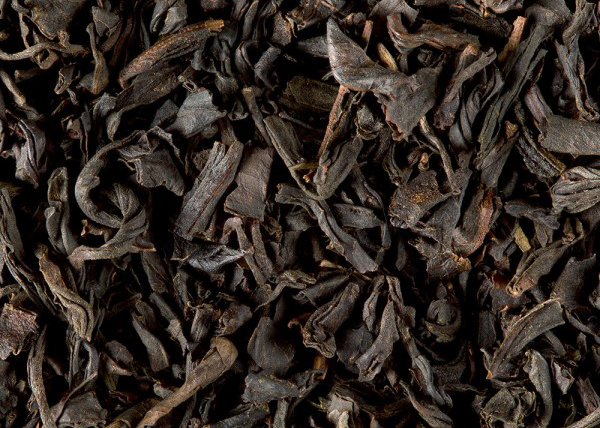
One of the most popular blends of all time is the fabulous English breakfast tea. This rich, intense mixture includes black teas from Kenya, Ceylon and Assam mixed in various proportions. More luxurious variations of this well-known blend use the more subtle and expensive black Keemun tea from China. When brewed, the drink is characterised by a heavy body, rich flavour and bitter, often malty notes. It goes particularly well with milk.
Earl Grey
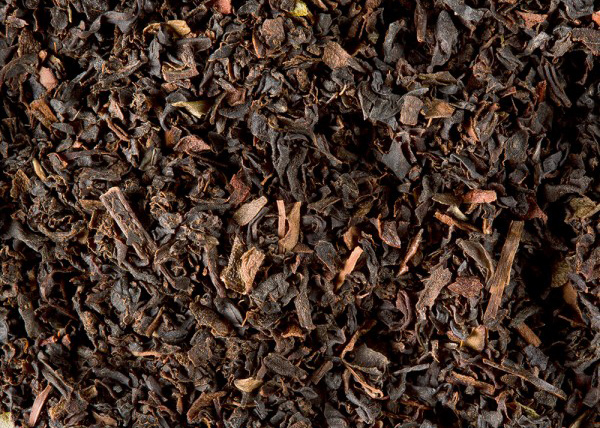
Here’s another classic blend whose name is sure to sound familiar to pretty much every tea drinker out there. It’s a refreshing, citrusy mixture blending 1–3 types of black tea and flavoured with bergamot oil and/or peel. Again, it goes splendidly with a splash of milk. Because of its enduring popularity, Earl Grey now boasts numerous different variations, such as those that take green tea as their base or are flavoured with flowers instead of bergamot.
Genmaicha
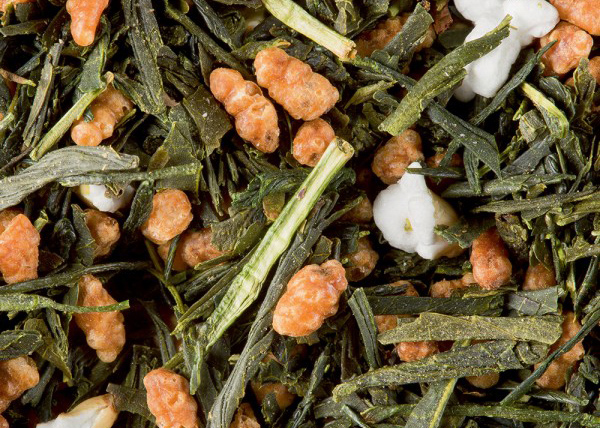
Originating from Japan and now sipped all over the globe, this must be the world’s best-known green tea blend. In its native land, it’s often called “people’s tea”. Genmaicha combines the delicious Japanese sencha tea with roasted rice. In the beginning, when green tea was still a rare and expensive delicacy, rice was mixed into the leaves to make the resulting blend cheaper. Nowadays, this tea is valued because of its exquisite taste. Popped rice is sometimes added to the leaves as well: this has led to some people referring to Genmaicha simply as “popcorn tea”.
Herbal and Fruit Teas
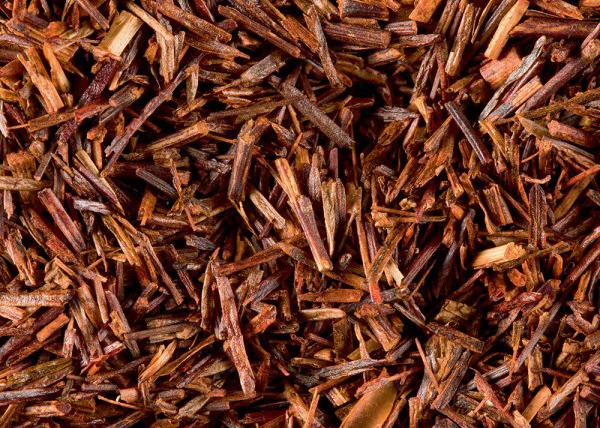
Hot herbal and fruit infusions are generally called teas. Strictly speaking, however, they are not: to quality as a tea, a drink must be produced from leaves of a tea tree. Because herbal and fruit infusions are made from fresh or dried fruit, flowers, herbs, seeds and even various roots, they’re not really part of the tea family and are instead simply hot drinks.
No matter what you’re going to call them though, you won’t be able to dispute the popularity of these mixtures. One of the reasons behind it is the fact that these infusions are caffeine-free, so they can be enjoyed by children or those who are sensitive to the stimulant. Most of these infusions also offer a wide range of health benefits: for example, camomile tea has a calming effect, peppermint tea is particularly refreshing and capable of boosting digestion, ginger tea is perfect for those who have caught a cold, raspberry leaf tea can act as a natural cough remedy… Not to mention, of course, that drinks like that are extraordinarily delicious!
Rooibos tea, which has been growing in popularity lately, deserves a separate mention. It’s produced from the leaves of the South African Aspalathus linearis shrub. The drink is marked by the natural sweetness of honey, delicious notes of dried cherries and sometimes even vanilla. When brewed, it acquires a bright-red colour, which is why this tea is at times referred to as red. Its body is heavy and relatively thick. Like all herbal and fruit infusions, rooibos is caffeine-free, so some people see it as a great alternative to the intensity of black tea.

Loose-Leaf Tea, Tea Sachets or Tea Bags?
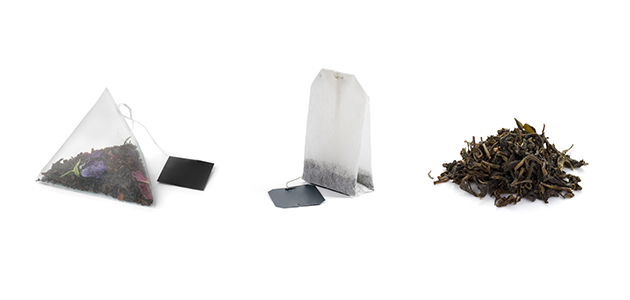
So, we’ve gone through all of the main tea varieties — what’s left to determine now is which shape or form they should be purchased and brewed in. The truth is, a question like that would’ve made no sense at all up until the start of the 20th century. That’s because all tea was loose-leaf tea up to that point. In 1908, Thomas Sullivan, an American tea merchant, changed the game by accidentally discovering tea sachets. When sending tea samples to his clients, he would pack them in silk sachets, expecting the recipients to remove the leaves from the sachets before brewing. His clients decided to brew their tea straight in a sachet though — and they ended up liking it so much that they were soon asking Sullivan to send them nothing but pre-packed tea. The convenience of this brewing method was ultimately recognised by other tea drinkers and became so popular that it all but replaced loose-leaf tea. The question still remains though: which method is best at unveiling the unique flavours of different tea leaves?
Loose-Leaf Tea
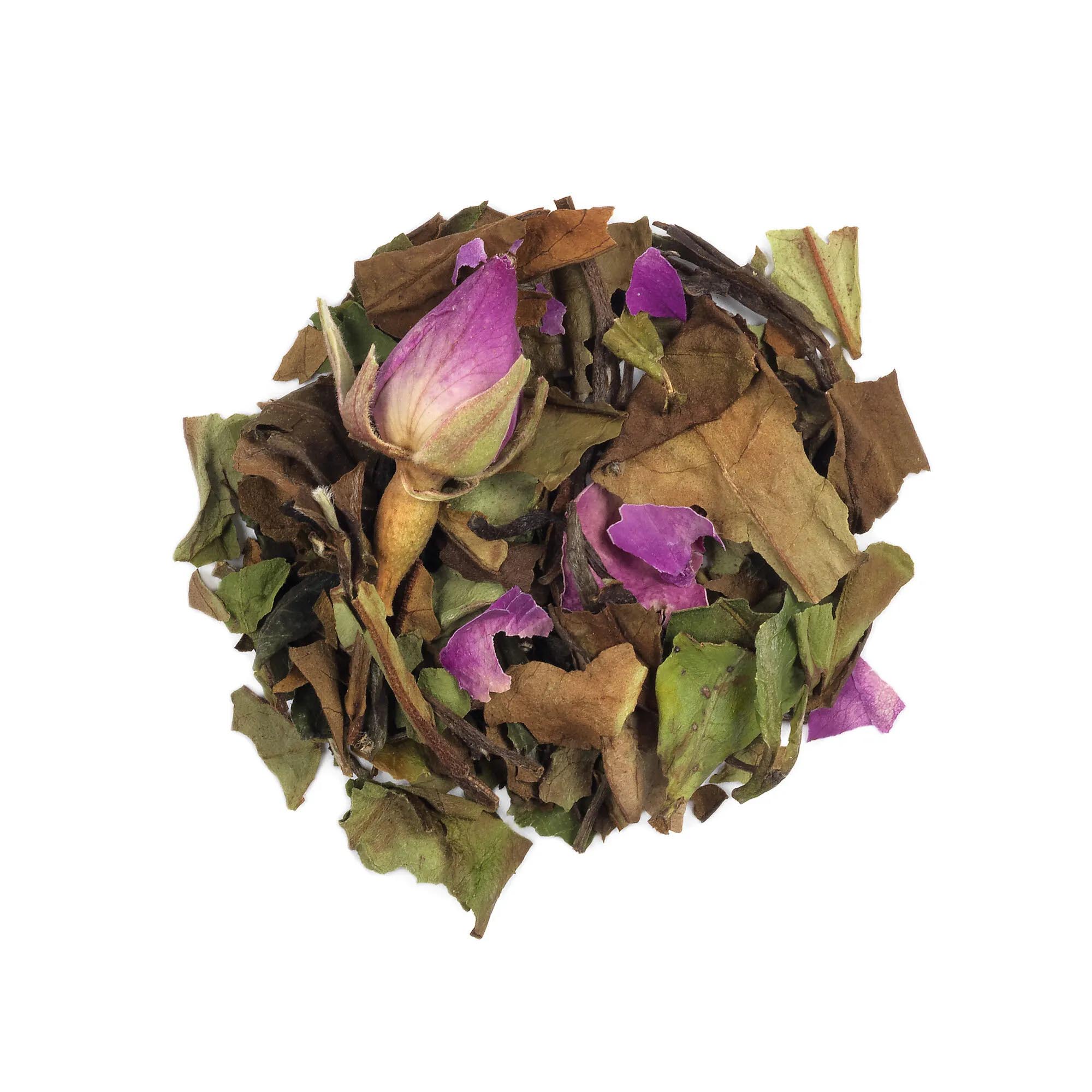
The best possible flavour. The finest teas always come in a loose-leaf form. Whole leaves contain a variety of oils, so their flavours and aromas are left intact as long as they remain loose. When water is poured over leaves like that, they’re slow to release their unique qualities, which ultimately results in a drink that’s particularly subtle and multi-layered. The surface area of loose tea leaves is larger than that of ground tea too, so whole leaves tend to remain fresh for longer.
Eco-friendly. No plastic, paper or other materials — nothing but natural, biodegradable leaves.
Lower price. There’s a rumour floating around that compared to other types of tea, loose-leaf tea is more expensive. The very opposite is true, in fact! Remember that as little as a few grams of loose-leaf tea is enough for a single serving, while high-quality teas can actually be re-steeped several times.
Convenience. Another common myth is that loose-leaf tea is difficult to brew. If you have a quality teapot or a special mug at home, brewing some tea from loose leaves is just as simple as steeping a sachet or a bag in some hot water.
Tip: when choosing a tea infuser, keep in mind that it should be spacious enough to accommodate the leaves and let them unfurl freely — otherwise, tea leaves might end up holding on to some of their most precious qualities.
Tea Sachets
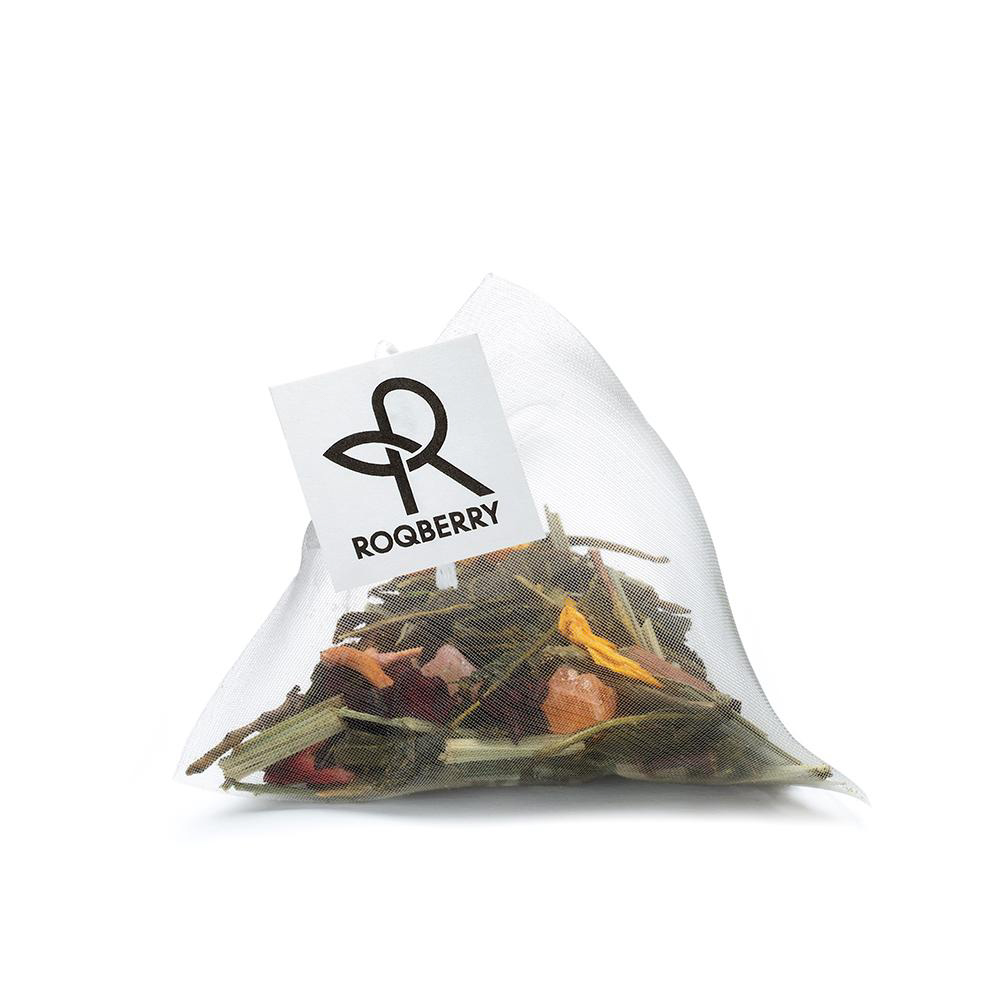
Excellent flavour. In terms of their features, tea sachets are right in between tea bags and loose-leaf tea. They contain unbroken or only slightly broken leaves and there’s enough space for them to unfurl. This ensures excellent taste and exquisite quality.
Towards protection of the environment. Most manufacturers tend to look for environmentally friendly solutions, so more and more of them are now using sachets that are 100 % compostable.
Maximum convenience. No teapots are needed in this case: simply put a sachet into your favourite cup and pour water over it.
Tea Bags
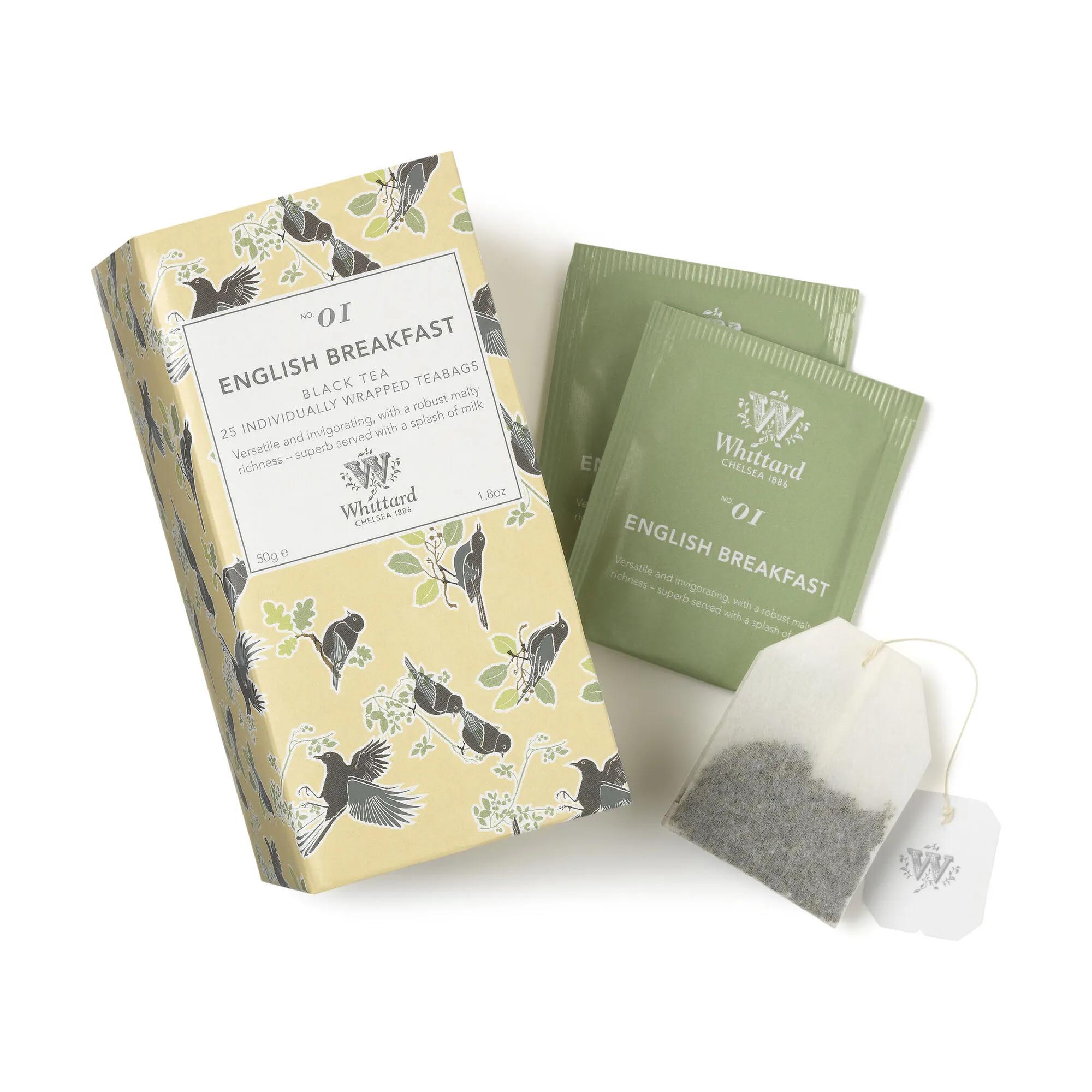
Good flavour. Some say that high-quality tea is never put in bags — the best case scenario involves finding high-quality tea dust in them. That’s mostly true. You’ll notice, however, that pretty much every tea manufacturer out there has tea bags in its assortment. The full truth is this: those who manufacture high-quality tea would never use leaves of poor quality in their products, tea bags included. So, the best you can do is simply make an informed decision when it comes to choosing your tea manufacturer.
Towards protection of the environment. Just like sachets, tea bags are also getting more environmentally friendly by the day.
Maximum convenience. Again, there’s no need for teapots or special mugs here. All you have to do is put a tea bag into your favourite cup.
Tips: How to Brew Delicious Tea?
Now that we’re aware of the key tea varieties and the main shapes they can come in, what’s left for us to do is learning how to brew tea properly. Sure, all you need for a cup of delicious tea is basically high-quality leaves and some hot water — but there are still a few important details that can raise your tea ritual to a whole new level.
High-Quality Water
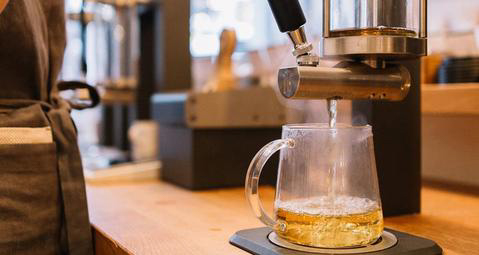
When brewing a cup of tea, do you ever use water that’s been boiled at least once before? This may come as a surprise, but it’s actually one of the most common brewing mistakes. It leads to tea failing to unveil the full spectrum of its flavours and hence, quite literally, falling flat. Water that’s been boiled before has already lost most of its original vitality — which is to say that it has lost a great deal of oxygen.
Water hardness is also an important factor. If you use hard water when brewing tea, the drink might lack flavour and have a metallic aftertaste. On the other hand, if the water is too soft, leaves may release their flavours too quickly, creating a bitter, overly intense taste. It’s best to use fresh water with a pH of around 7.
Tip: use fresh, filtered water (or spring water if you want nothing but the very best). You’re bound to be amazed by how pure, rich and vivid the taste of your tea will be.
Water Temperature Suited for a Particular Type of Tea
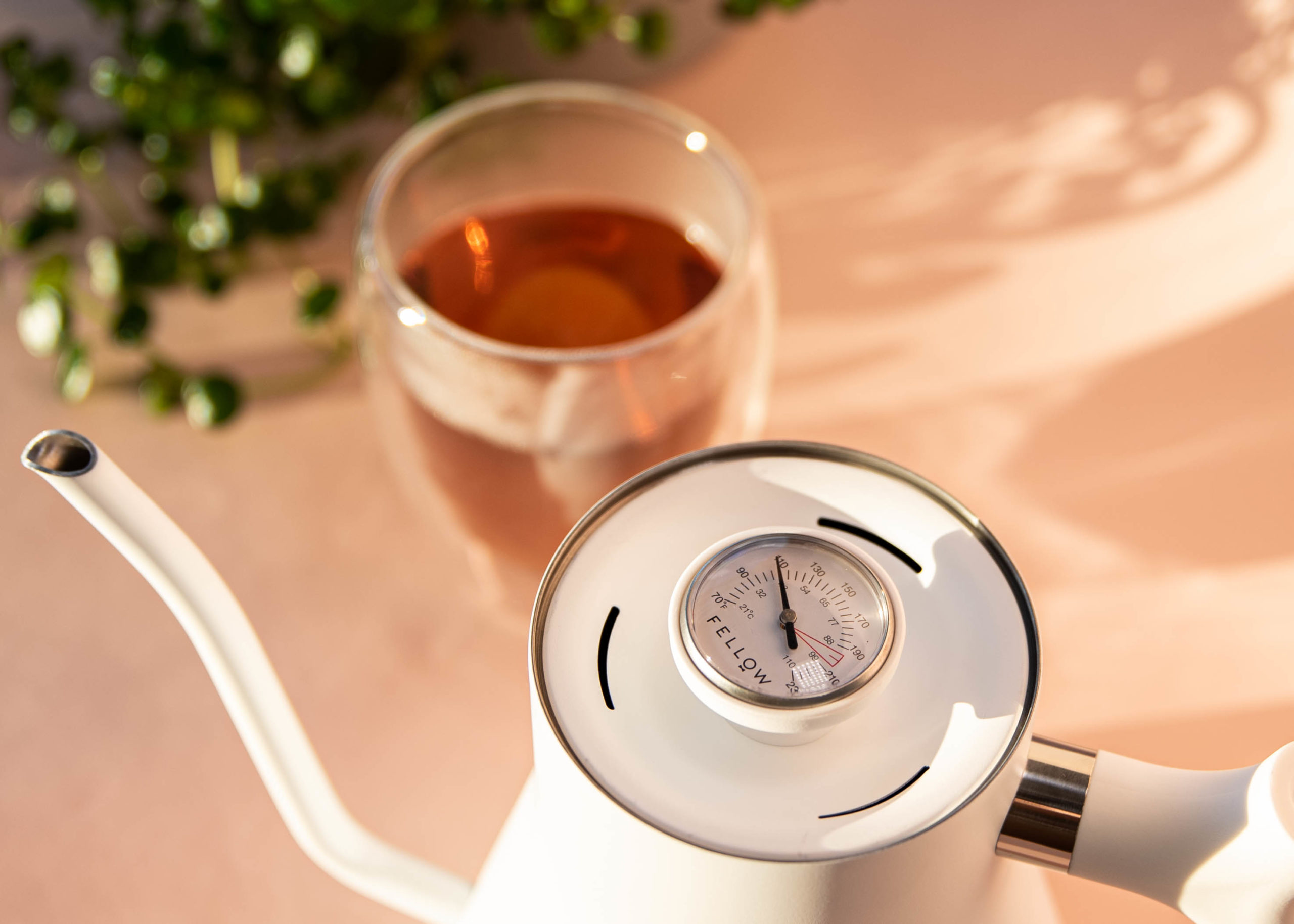
Most of us would probably pour freshly boiled water over our tea without a second thought! That’s fine for strong black teas, pu-erh, heavily oxidised oolongs and herbal or fruit infusions. When it comes to more subtle teas though, such as lightly oxidised oolongs, green teas and white teas, freshly boiled water ruins them completely. Teas like that must be brewed using water of around 70–90 °C (depending on the exact variety). It’s only then that the most sophisticated, naturally sweet notes can unfurl to the fullest.
Tip: always read the instructions found on the packaging of your tea. They are the key to brewing it correctly. We recommend choosing a kettle that allows you to set the desired temperature. If you don’t have one like that, simply remove the lid of your kettle and let the water rest for 3–5 minutes after boiling, then proceed to pour it over the leaves.
The Right Water-to-Tea Ratio
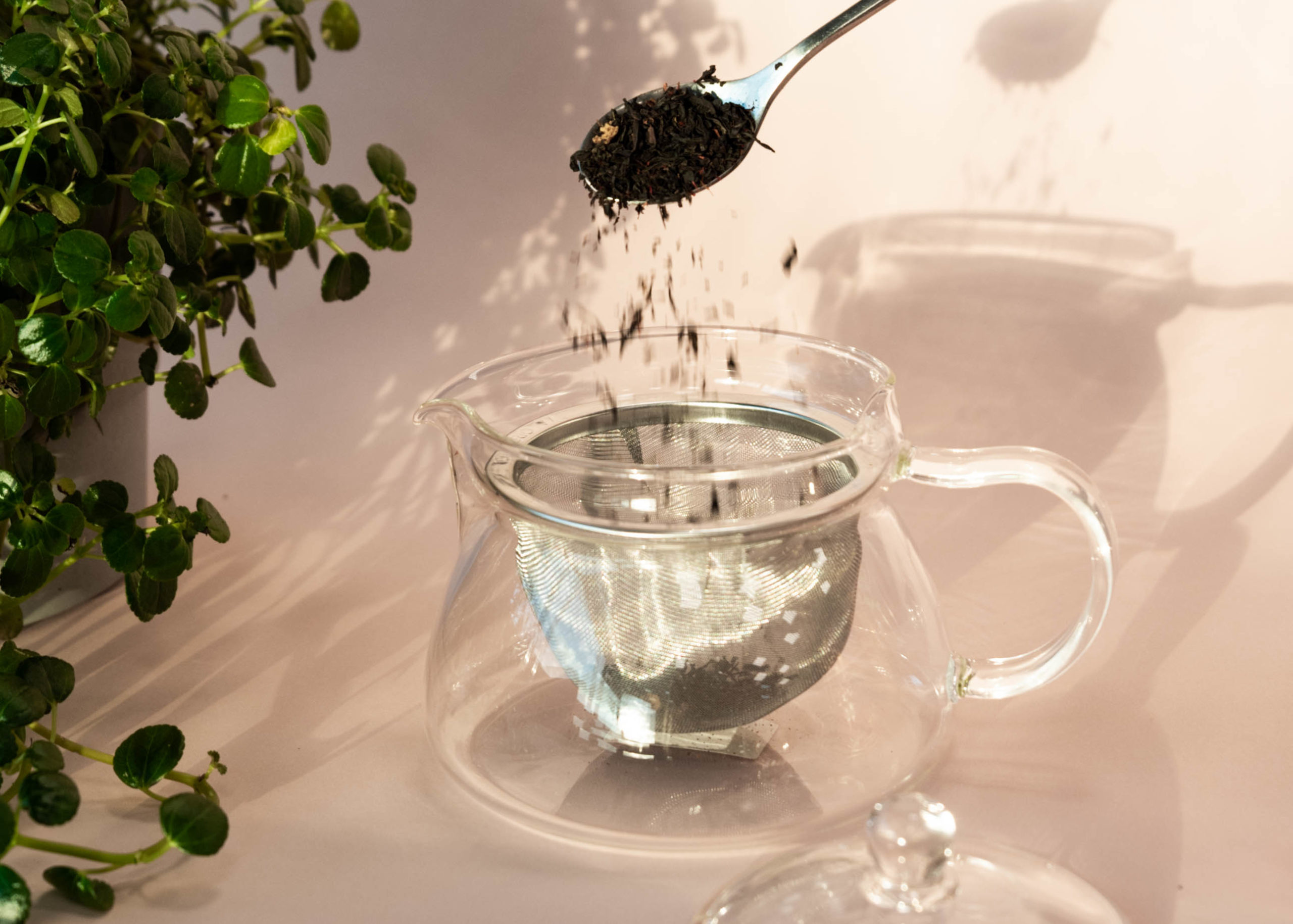
When manufacturers indicate the recommended water-to-tea ratio on the packaging of their products, they don’t do that for nothing. If there aren’t enough leaves in your cup or teapot, you’ll get a particularly weak flavour, while too many leaves will make the brew intense and bitter. The general standard is 2 grams (or one teaspoon) of tea leaves per one serving (200 ml). When it comes to white, fruit or herbal teas, 4 grams, or 2 teaspoons, is usually recommended.
Tip: keep the manufacturer’s recommendations in mind: start with them, then adjust and experiment in any way you see fit to discover what works for you.
The Right Steeping Duration
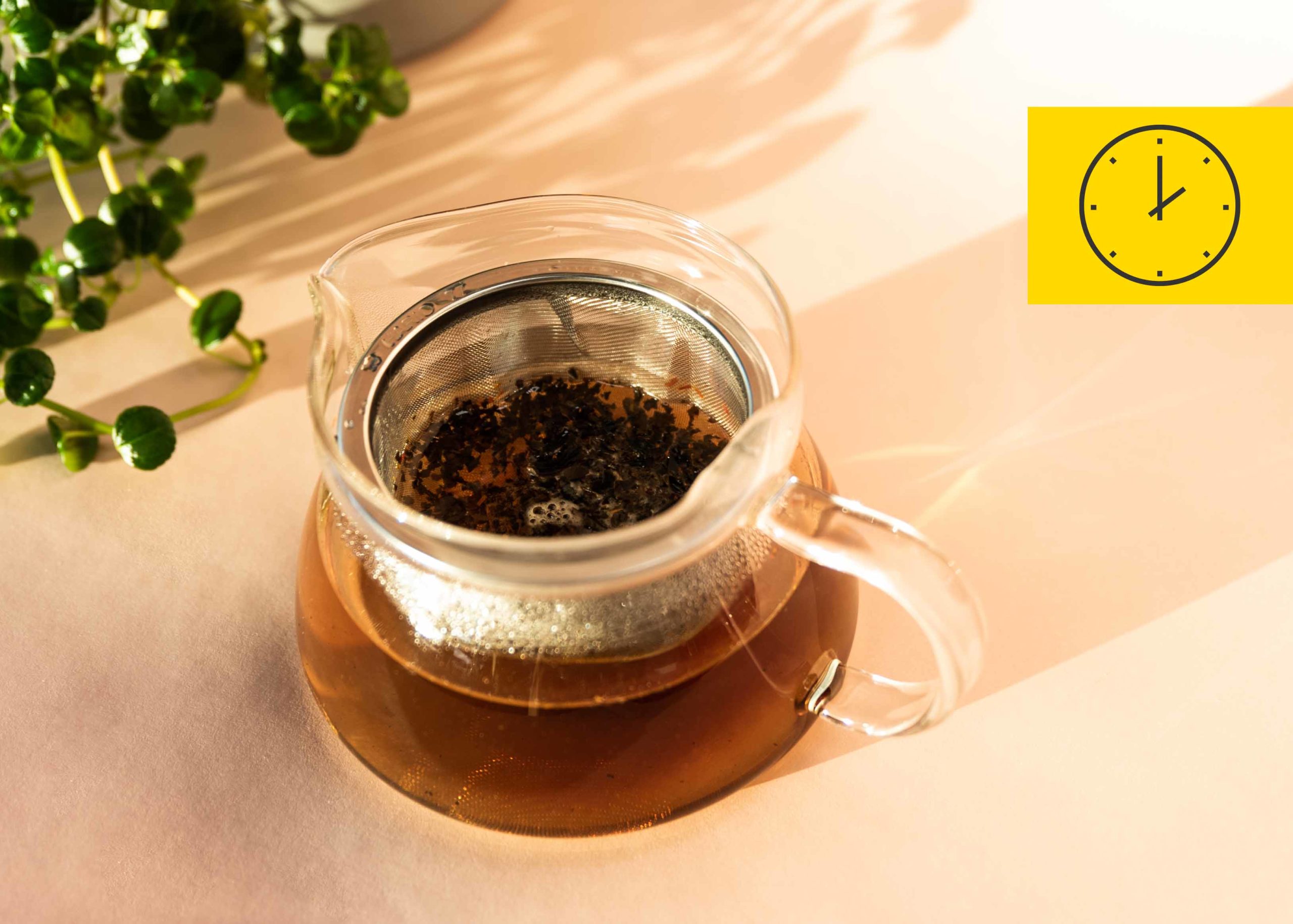
If you’re a fan of strong tea, you probably tend to steep your bags, sachets or loose leaves for a while longer. Adhering to the manufacturer’s instructions is highly recommended though. The thing is, if you steep your tea for too long, it’ll eventually become bitter and lose some of its subtler flavours — and if you don’t steep it long enough, you’ll end up with a hot, yet tasteless, drink. Flavour takes time to unfold, and this is particularly true to loose-leaf teas.
Tip: pay attention to the steeping duration recommended by the manufacturer. You can use this as a general rule: steep richer varieties for 3–6 minutes, yet limit the steeping to 2–3 minutes when brewing subtler teas (such as black Darjeeling tea, white tea or green tea).
The Latest Tea Trends
We’ll dedicate the last section of this post to new trends dominating the tea world at the moment. What’s in fashion now? Are there any unusual trends emerging? Last but not least, are you familiar with all of these exciting, unique flavours?
The Cult of Matcha
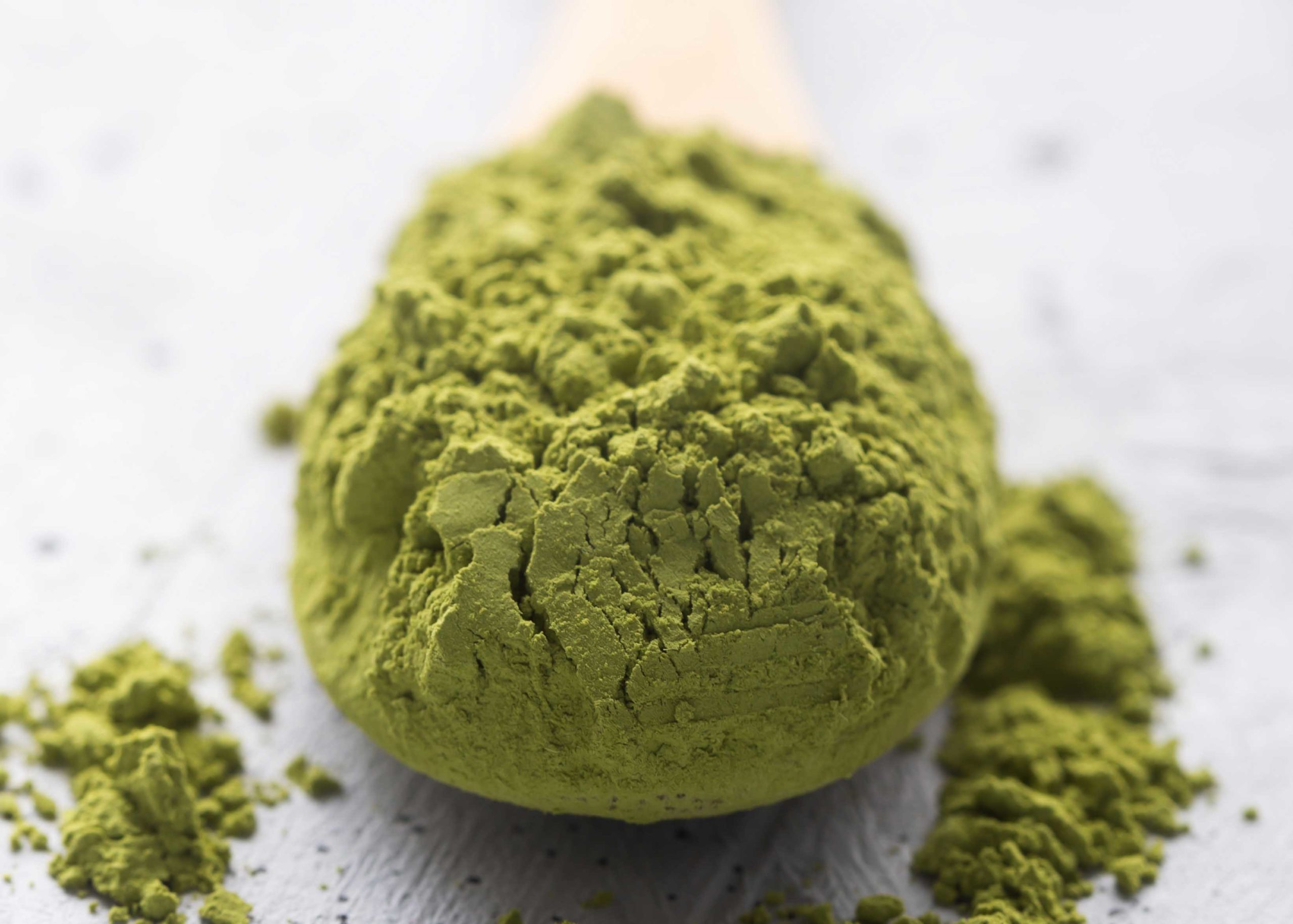
The fabulous matcha green tea is the latest trend in the modern tea scene. Used during traditional Japanese tea ceremonies, this green powder is made from the first tea leaves harvested in the early spring. Before these leaves are plucked, the trees they grow on are kept in the shade: this endows the leaves with a bright green colour and makes the tea itself much sweeter. Once plucked, the leaves are dried, sorted and ground into powder. To brew a cup of matcha, hot water is poured over this powder. The mixture is then whisked using a special tool.
The resulting drink is characterised by a bright green colour, creamy texture, rich plant aroma and a sweet, piquant taste. Matcha powder is often blended into breakfast smoothies. It’s also mixed with milk foam to produce a drink called “matcha latte”, which is extremely popular nowadays. Matcha is even used to flavour various desserts and savoury dishes.
The bright-green powder has numerous health benefits. After all, when we drink matcha, it’s not only the liquid infused with the flavour of tea leaves that we end up consuming: instead, we ingest the ground tea leaves themselves. According to the latest research, this tea can improve mood, boost mental abilities, enhance memory and promote alertness. It keeps stress and fatigue at bay as well.
Fizzy Kombucha
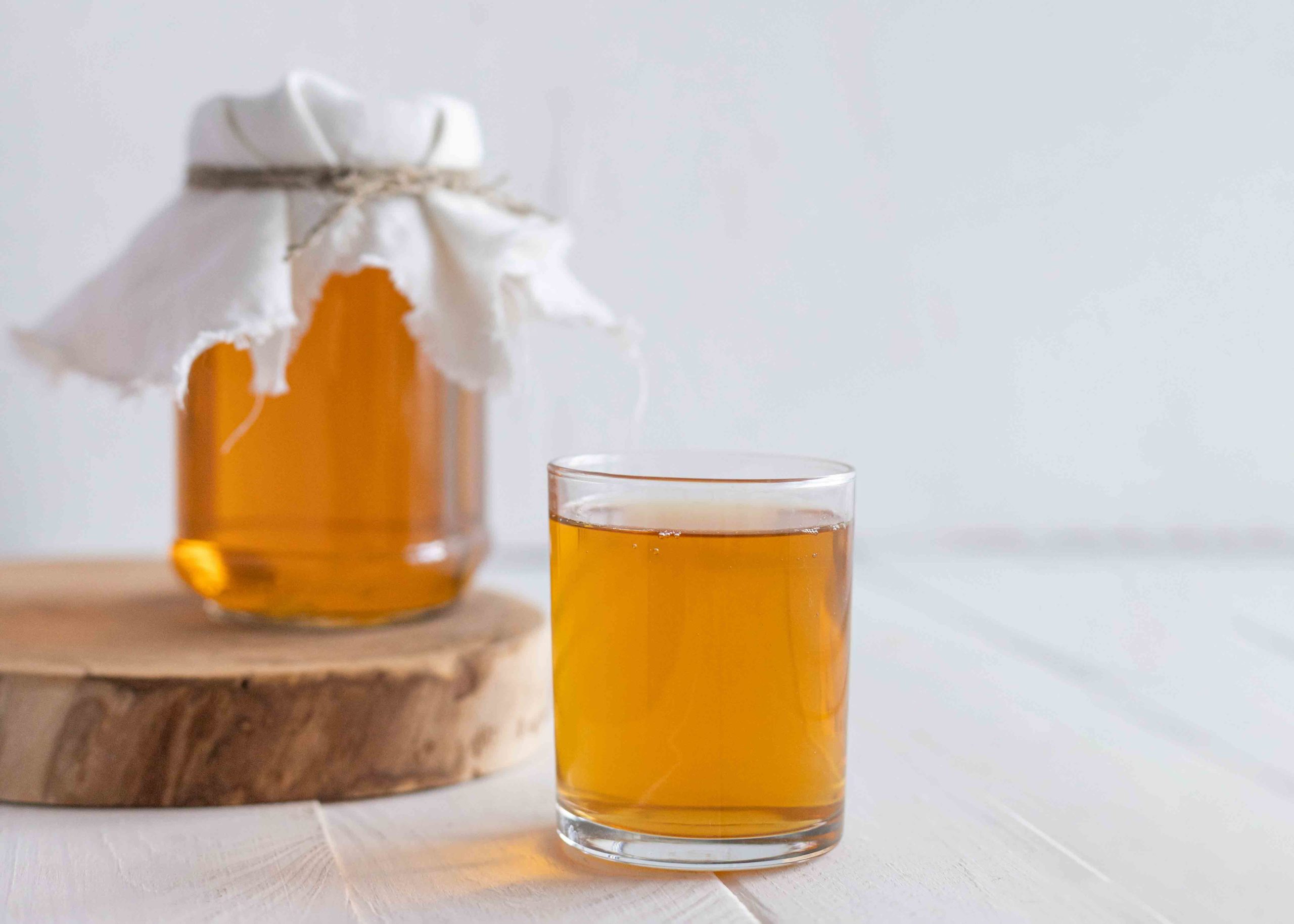
Kombucha is a fermented, naturally carbonated tea marked by a refreshing sweet-and-sour taste. Thanks to its probiotic properties, it promotes intestinal well-being. Nowadays, readymade kombucha is available in numerous stores, bars or cafés — and the more adventurous of you can even try your hand at making it at home!
How is it made then? Well, what you’ll need is some tea leaves, water, sugar and a tea fungus, otherwise known as a “scoby”. Green or black tea is generally used. During the process, the scoby turns this tea into a fermented, sparkling drink: as it ferments, alcohol (less than 1 percent), organic acids, CO2 and numerous good bacteria, or probiotics, are produced. Fermentation lasts for about a week. Once it’s over, you can store kombucha in the fridge and consume it over the next few months.
Kombucha is often used as an energising beverage or as an ingredient in various cocktails.
The Renaissance of Cold Tea
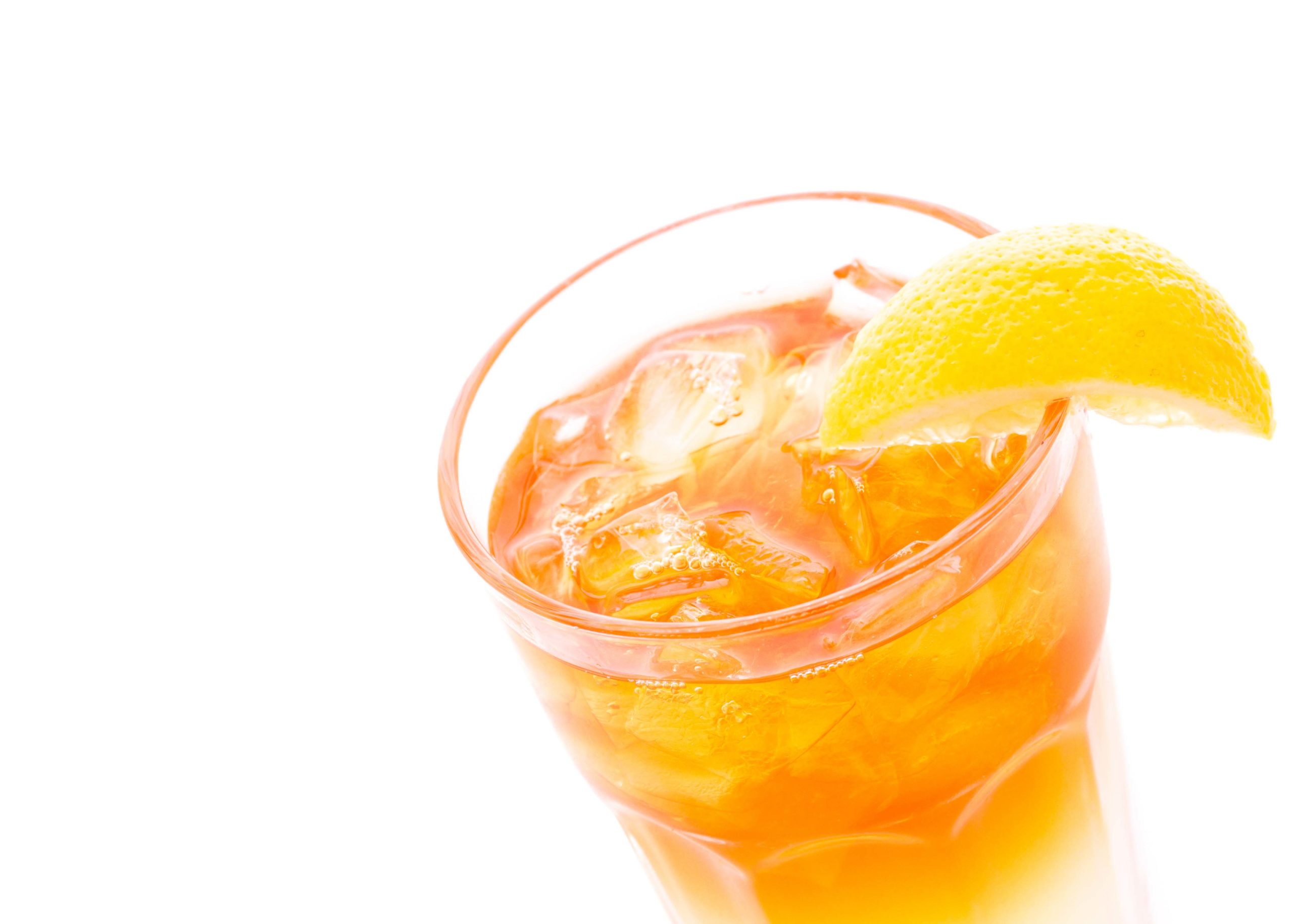
Did you know that over in the USA, tea is most commonly enjoyed as a chilled beverage and served with ice? As many as 80% of the total tea consumed in this country is presented in this exact form. Even though cold tea has been consistently topping the charts all over the globe for the past several years, most tea manufacturers have only recently started producing blends designed specifically for home-brewed cold tea.
Cold-Brew Tea
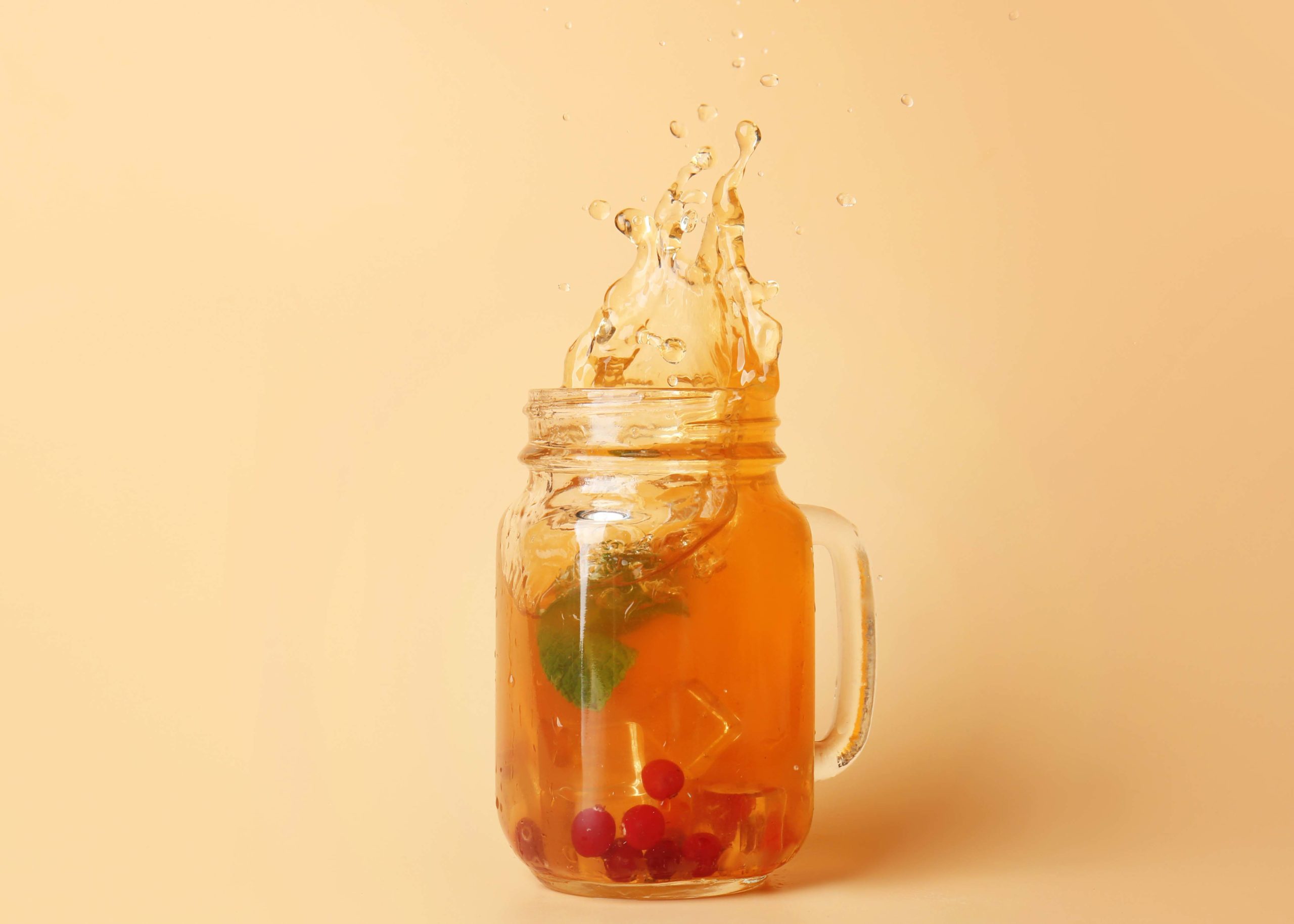
Cold tea can also be cold-brewed. When prepared in this way, tea acquires a lighter body and some extra sweetness. White tea, green tea and first-flush black Darjeeling tea are all suited perfectly for this brewing method. There are special tools available on the market, but you can do it yourself too: simply pour cold water over the leaves and put it in the fridge for 2–3 hours. Afterwards, pour it into cups through a sieve and serve it with ice.
Tea Cocktails
It’s becoming clear that tea can serve as an excellent cocktail ingredient, regardless of whether these cocktails contain alcohol or not. This isn’t exactly a new invention though. As far back as the beginning of the 19th century, a cocktail made from chilled green tea and champagne was making the rounds in the USA. Nowadays, drink menus in trendy bars feature options like tea martini: a mixture of martini, gin, sugar syrup and cold Earl Grey.
Tea in Gourmet Dishes
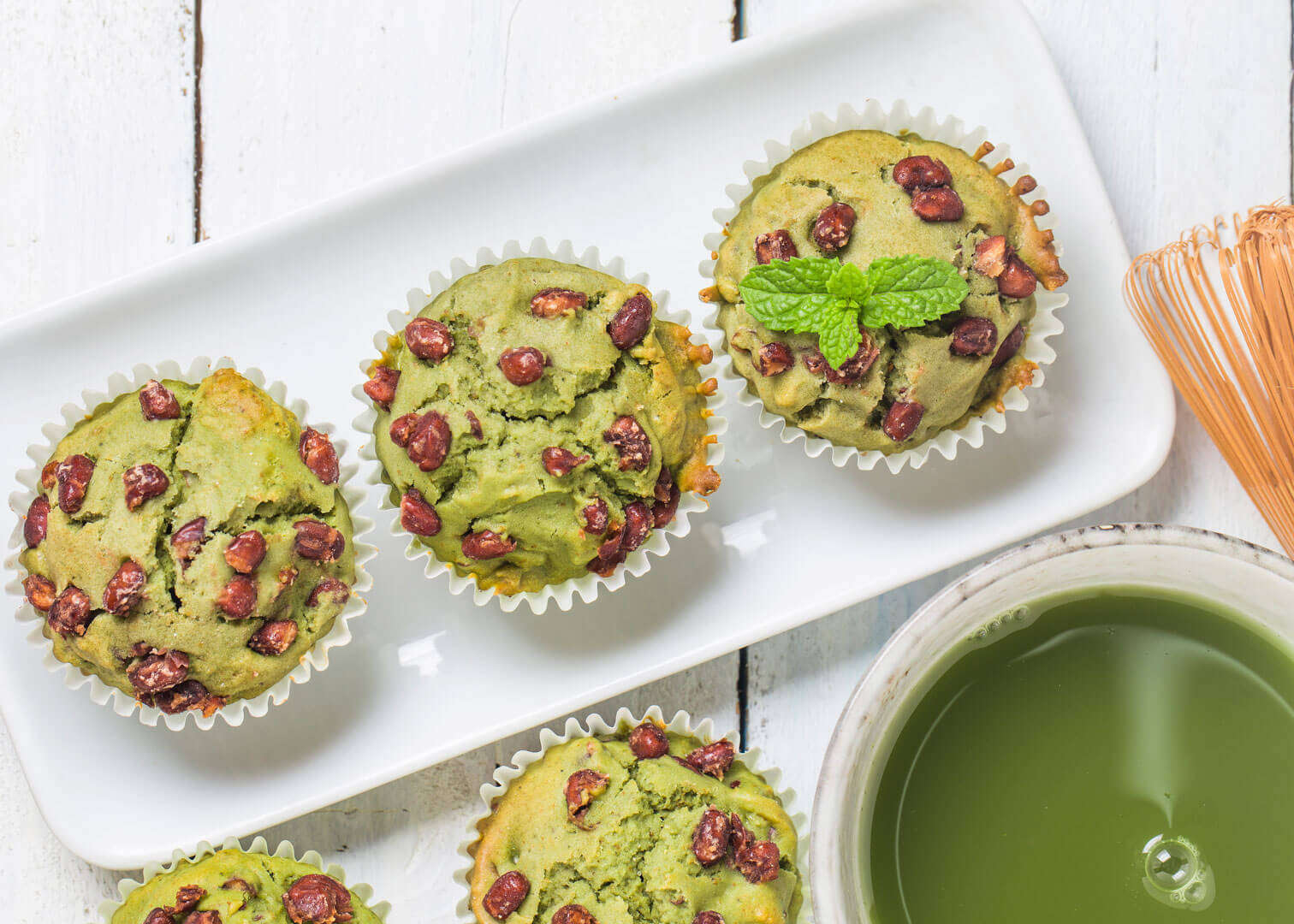
The best chefs in the world are now using tea as an ingredient in exquisite dishes. For example, green tea is suited well for various salad dressings and sauces, while the smoky black Lapsang Souchong is sometimes used when making steak marinades. Matcha powder is mixed into cupcakes, cookies and pies. Teas are also used to flavour exotic jams, making them perfect for breakfast.
In Conclusion
We hope that instead of making your head spin, the dazzling variety of teas on offer has inspired you to dive straight into this delicious realm and discover new, exciting flavours. We won’t be keeping you any longer! After all, as the Mad Hatter has famously put it:
‘Yes, that's it,’ said the Hatter with a sigh: ‘it's always tea-time…’
Lewis Carroll, Alice in Wonderland

